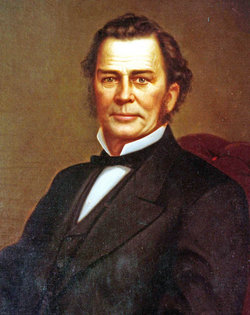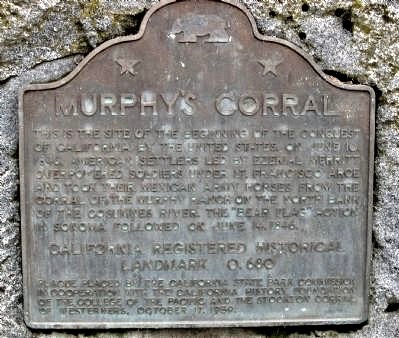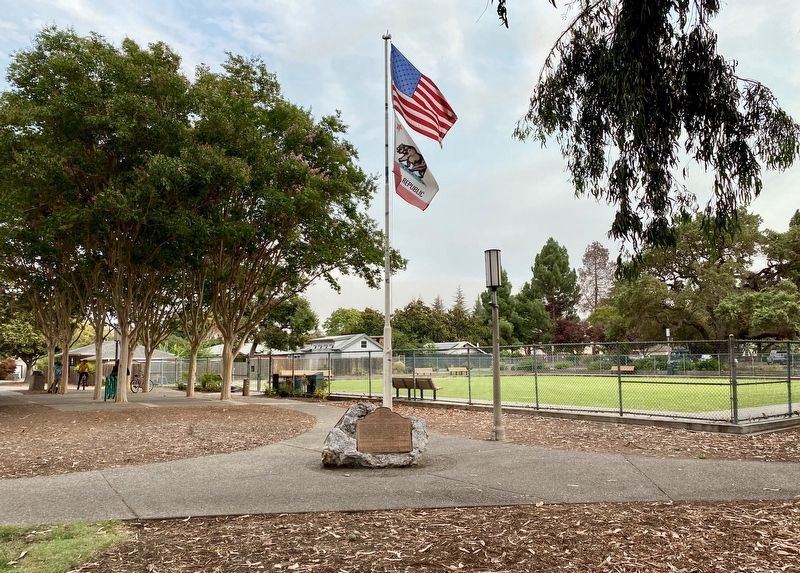
Family History
The ranch was owned by Martin Murphy, Jr. (1807-1884), whose family was in the Stephenson-Townsend-Murphy Party, the first party to cross the Sierras by covered wagon in 1844! Alos, the first to bring oxen across the plains and the first to use the route now used by Union and Pacific Railroads. The Donner party used the route two years later and Martin Murphy, Jr. was a member of the party who rescued them.
They settled in this area of Elk Grove along the Monterey Trail from 1844 to 1849. The Murphys lived north of the Cosumnes River and west of what is now Highway 99. At the time that road was known as the Monterey Trail, and it led from New Helvetia (Sutter’s Fort) to the Mexican capital of Monterey.
Mrs. Murphy’s opened up a school, which was somewhat of a home school. It was open for neighboring children as well as the Murphy children. Although it was not a formal school and it was not a public school, it was Elk Grove’s first place of education.
The Murphy Ranch played a prominent role in the history of the early days of California. The Incident at Murphy’s Corral was a defining moment in California history and one of the first steps in California breaking away from Mexico and becoming a state.
At the ranch, he set up corrals for travelers to rest their horses, and among these travelers came John C. Frémont. Nervous about his presence in California, Mexican authorities ordered Lieutenant Francisco Arce to transfer 300 horses from Mission San Rafael to Mission Santa Clara. It was when they stopped for the night at Mr. Murphy’s corral that Ezekiel Merrit saw his opportunity and rustled up some horses on June 10, 1846!
Ultimately, three years later in 1849 the Murphy’s moved on toward the San Francisco Bay Area and became known as the founders of the city of Sunnyvale and built the first true American home in California, a prefabricated lumber house, brought around the Horn in 1849. Members of the Murphy family lived in Sunnyvale for four years, until 1953, when the property was acquired by the City of Sunnyvale. The house was destroyed by fire in 1961. The Murphy family is credited with founding four other cities in the area. Martin Murphy Sr. started San Martin, located South of San Jose. Martin Murphy Jr. started Sunnyvale and son John was credited with founding the gold camp which later became the town of Murphys in the gold country. All of these areas have markers documented on Hmdb.org.
Historical Marker No. 680
(Erected October 17, 1959)

The Elk Grove marker placed at the location of the ranch reads, “This is the site of the beginning of the conquest of California by the United States. On June 10, 1846, American settlers led by Ezekial Merritt overpowered soldiers under Lt. Francisco Arce and took their Mexican Army horses from the Corral of the Murphy’s Ranch on the North Bank of the Cosumnes River. The “Bear Flag” action in Sonoma followed on June 14, 1846.”
Historical Landmark No. 644
(Erected May 22, 1940)

The Sunnyvale marker placed at the site of Martin Murphy home reads…. “Martin Murphy, Jr. arrived in California with his family in 1844 in the first wagon train to cross the Sierra Nevada. The founder of Sunnyvale, he constructed here his house of pre-fabricated lumber brought around the Horn in 1849. Members of the Murphy family lived here continuously until 1953, when the property was acquired by the City of Sunnyvale.”
FYI
Bear Flag Revolt
About 500 Americans settlers lived in the Sacramento Valley, compared to 8,000-12,000 Mexicans. After a group of Americans seized a large herd of horses in Elk Grove, four days later another group captured Sonoma, a chief settlement north of San Francisco, on June 14, 1846 and declared California’s independence. They hoisted a flag with white back round, a grizzly bear, and red star and stripe and this was known as the Bear Flag Revolt. That original flag designed has not changed and is used today as the flag of California.